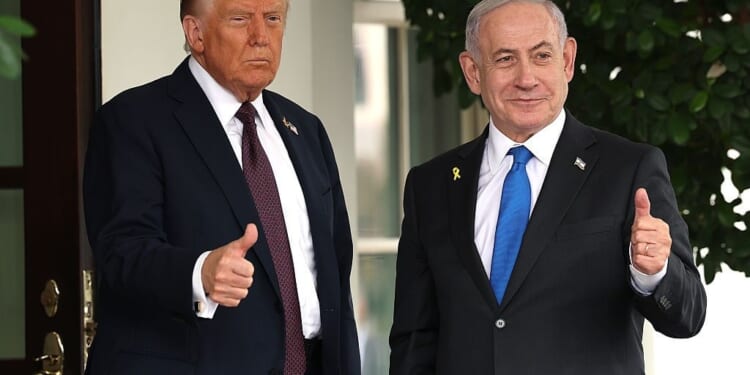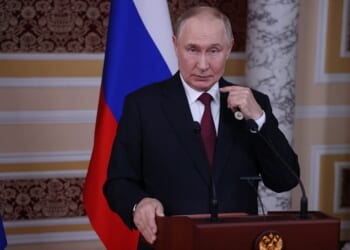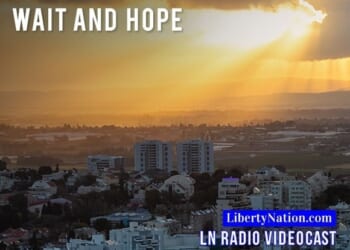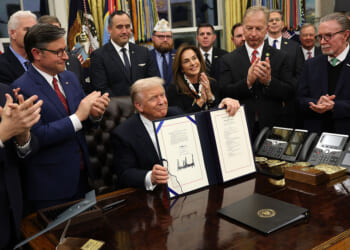
Here are reasons why it might work this time.
On Sept. 29, President Donald Trump and Israeli Prime Minister Benjamin Netanyahu met to review and discuss the Trump administration’s 21-point plan to end the conflict in Gaza. This came on the heels of the prime minister’s defiant speech to the UN General Assembly on Sept. 26, when he chastised the members in the aftermath of the carnage in the kibbutzim in southern Israel by the Hamas terrorists, asking, “And what did the world do? Too many of you looked away. Too many condemned us for defending ourselves. Too many rewarded the butchers with calls for a Palestinian state — a terror state that would serve as a launchpad for more October 7ths.”
“United Nations General Assembly delegates walked out of the auditorium before Israeli Prime Minister Benjamin Netanyahu’s speech,” an affront to the Israeli leader that is typical of the Palestinian and Hamas sympathizers who have been anti-Israel for decades.
Netanyahu and Trump Hash Out the Details
It is against this backdrop that Netanyahu and Trump have worked to achieve a mutually agreeable way forward. Trump observed during the press conference that his discussion with Netanyahu covered “Iran, trade, the expansions of the Abraham Accords … far more than anyone expected.” He thanked Netanyahu for agreeing to the Principles of Peace and the Arab nations, Indonesia, Pakistan, and other countries in the region that also supported the plan. The Times of Israel published a succinct summary, which highlighted an immediate ceasefire, hostage release, Hamas disarmament, and the reconstruction and development of Gaza’s critical infrastructure.
A crucial tenet of the plan orders that Gaza will be deradicalized as a “terror-free zone,” no longer a threat to Israel or its neighbors. Steps will be taken to rebuild and redevelop Gaza for its people to normalize their lives. If Hamas agrees, the war will cease immediately, and the Israel Defense Force (IDF) will halt combat operations and begin a measured withdrawal from Gaza. All hostages, believed to be 20 living and 28 dead, will be returned to Israel 48 hours after it signs the agreement. Following the hostages’ release, Israel will free Palestinian prisoners sentenced to life terms as well as Gazans arrested since the war began. It includes return of the bodies of hundreds of Palestinians.
After the plan is endorsed by all, aid will surge into Gaza at the rate of 600 trucks per day, and rebuilding of its infrastructure will begin. A temporary transitional government committee — overseen by a new international body established by the United States and advised by European and Arab partners — will administer day-to-day essential services. Trump referred to this as the Board of Peace; he will assume the role of chairman, and former UK Prime Minister Tony Blair is a confirmed member. The board must have members of stature to monitor the funding for rebuilding Gaza that could cost $50-$100 billion. Any involvement by the Palestinian Authority (PA) will be held in abeyance until it has been suitably reformed to undertake participation in Gazan affairs.
And what about Hamas? The Times of Israel explained, “Hamas will have no role in Gaza’s governance whatsoever. There will be a commitment to destroy and stop building any offensive military infrastructure, including tunnels. Gaza’s new leaders will commit to peaceful coexistence with their neighbors.”
International Partners to Preserve Peace
To maintain internal security within Gaza, the United States will, along with international partners including Arab nations, will develop and deploy a stabilization entity that will form and train a Gazan police force. Israel will not leave an occupying force, and the IDF will withdraw when Gaza’s internal security can keep the peace. Israel will not “occupy or annex Gaza.” Should Hamas attempt to delay or reject this proposal, the IDF will hand over “terror-free zones” to the international stabilization force. With many caveats, the agreement opens the door to a “credible pathway” to statehood. The language does not establish a Palestinian state, merely a “pathway.” Last, the United States will lead the way in creating a “dialogue” between Israelis and the Palestinians to establish a “peaceful coexistence.”
Over the decades, numerous agreements have attempted to bring peace between Israel and the Palestinians. None has succeeded. What makes the Principles of Peace different? First, the agreement comports with what Israel’s neighbors and the Europeans want to see happen, namely, the fighting in Gaza to stop, which has generated international momentum. Second, the Trump effect. The president views all international agreements as transactions, not merely foreign policy boilerplate. Third, ridding the region of Hamas has often been an unspoken objective of Israel’s neighbors.
The meeting today between Netanyahu and Trump has opened the door to true peace in the Middle East. Now, the challenge is to get everyone over the threshold.
The views expressed are those of the author and not of any other affiliate.
Liberty Nation does not endorse candidates, campaigns, or legislation, and this presentation is no endorsement.

















